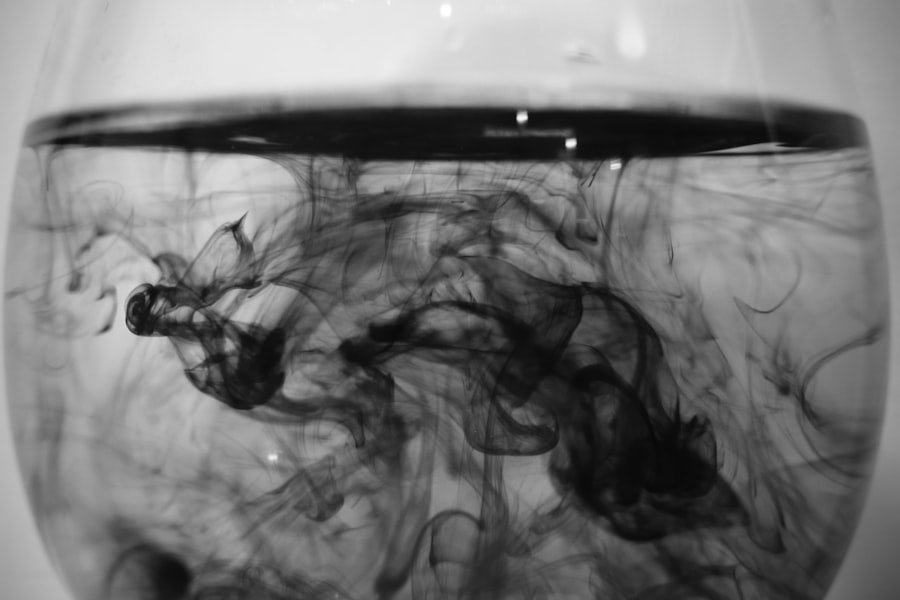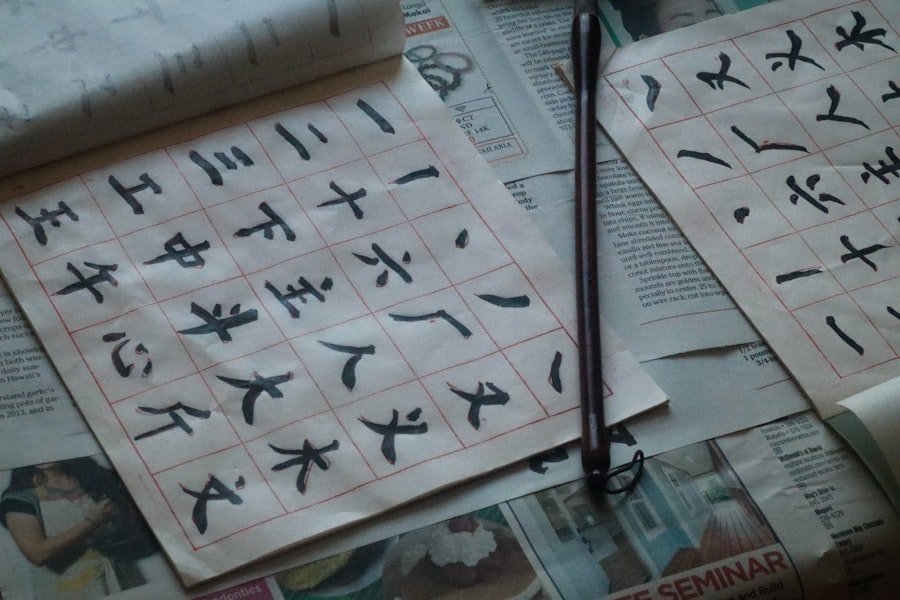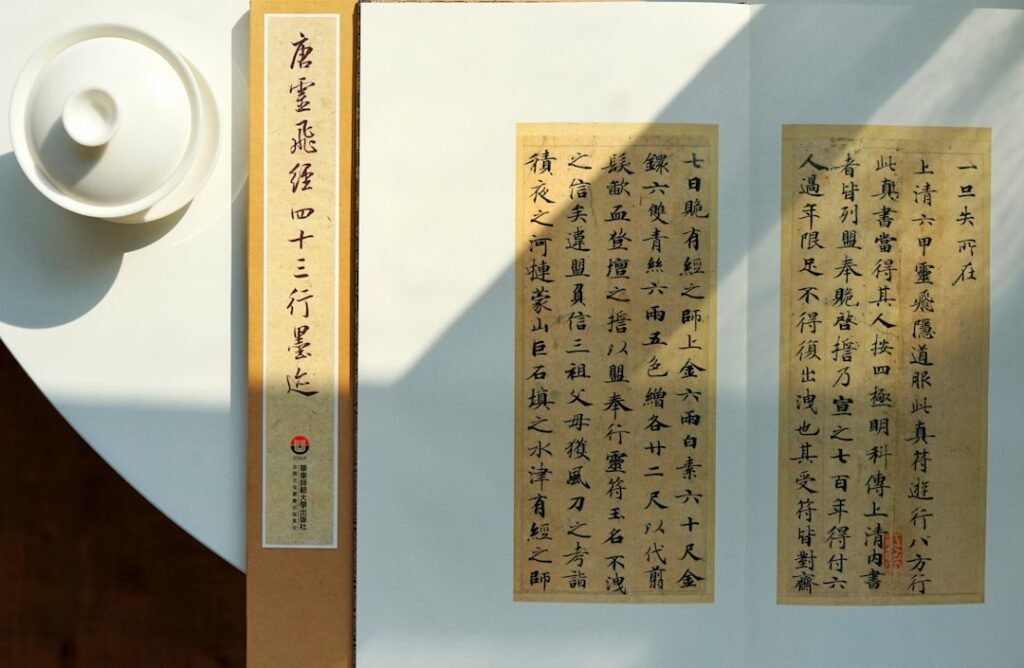Chinese calligraphy, an ancient art form, is not merely about writing; it is a profound expression of culture, philosophy, and aesthetics. The practice of calligraphy in China dates back thousands of years, evolving through various dynasties and styles. At its core, Chinese calligraphy is the art of writing Chinese characters with a brush, where each stroke is imbued with meaning and emotion.
The beauty of this art lies in its ability to convey the writer’s spirit and personality through the fluidity and precision of each character. To truly appreciate Chinese calligraphy, one must understand its fundamental principles. The four treasures of the study, known as “wenfang sibao,” consist of the brush, ink, inkstone, and paper.
Each element plays a crucial role in the creation of a calligraphic piece. The brush, for instance, is not just a tool; it is an extension of the artist’s hand, allowing for a range of strokes from delicate to bold. The ink, traditionally made from soot and animal glue, provides depth and richness to the characters.
The paper must be chosen carefully to complement the ink and brushwork, ensuring that the final piece resonates with harmony and balance. Master the art of Chinese calligraphy. Enroll now at the LC Chinese School in Oslo.
Table of Contents
ToggleSummary
- Chinese calligraphy is an ancient art form that involves writing Chinese characters with a brush and ink, and is considered a form of meditation and self-expression.
- There are different types of Chinese calligraphy sets, including beginner sets, traditional sets, and professional sets, each with their own unique features and purposes.
- Beginners should consider factors such as brush size, material quality, and ease of use when choosing a Chinese calligraphy set.
- The quality of materials used in a Chinese calligraphy set, such as the brush hairs and ink, can greatly impact the final result of the calligraphy work.
- The size and weight of the brushes in a Chinese calligraphy set can affect the comfort and control of the user when writing.
Types of Chinese Calligraphy Sets
When embarking on the journey of Chinese calligraphy, selecting the right set is essential for both beginners and seasoned practitioners alike. Calligraphy sets typically include the four treasures mentioned earlier, but they can vary significantly in quality and price. For novices, a basic set that includes a brush, ink stick, inkstone, and rice paper is often sufficient to get started.
These sets are designed to provide an introduction to the art form without overwhelming the user with excessive options. For those who wish to delve deeper into the craft, more advanced sets are available that feature high-quality brushes made from various animal hairs, such as wolf or goat. These brushes allow for greater versatility in stroke techniques and can produce a wider range of effects.
Additionally, premium inksticks made from natural materials can enhance the richness of the ink, while specialised papers designed for calligraphy can elevate the overall quality of the work. Ultimately, the choice of a calligraphy set should reflect one’s commitment to learning and mastering this exquisite art form.
Considerations for Beginners

As a beginner in Chinese calligraphy, there are several factors to consider when starting your practice. First and foremost is the choice of brush. Beginners may find it beneficial to start with a medium-sized brush that offers a balance between control and flexibility.
This allows for easier handling while still enabling the exploration of various stroke techniques. It is also advisable to select brushes that are durable and easy to clean, as this will encourage regular practice without the frustration of dealing with poor-quality tools. Another important consideration is the type of paper used for practice.
Rice paper is often recommended for beginners due to its absorbent qualities and smooth texture. This type of paper allows for clear visibility of strokes while providing a forgiving surface for errors. Additionally, beginners should not shy away from using practice sheets or grids that can help guide their hand movements and improve their understanding of character structure.
With patience and persistence, beginners can gradually develop their skills and confidence in this beautiful art form.
Quality of Materials
The quality of materials used in Chinese calligraphy significantly impacts the overall experience and outcome of one’s work. High-quality brushes are essential for achieving precise strokes and varied line thicknesses. A well-crafted brush will have a good balance between stiffness and flexibility, allowing for both controlled movements and expressive flourishes.
When selecting brushes, it is advisable to consider those made from natural hairs, as they tend to hold ink better and provide a more satisfying writing experience. Similarly, the quality of ink plays a vital role in calligraphy. Traditional inksticks made from natural materials produce richer colours and smoother application compared to mass-produced alternatives.
Investing in high-quality ink can elevate one’s work from ordinary to extraordinary, as it allows for greater depth and vibrancy in each character. Furthermore, using premium paper designed specifically for calligraphy ensures that the ink adheres properly without bleeding or feathering, resulting in clean and crisp lines that showcase the beauty of each stroke.
Size and Weight of Brushes
The size and weight of brushes are crucial factors that can influence a calligrapher’s technique and comfort during practice. Brushes come in various sizes, typically ranging from small to large, each serving different purposes. Smaller brushes are ideal for intricate details and fine characters, while larger brushes are suited for bold strokes and larger characters.
Beginners may find it helpful to experiment with different sizes to discover which best suits their style and preferences. Weight is another important consideration; a brush that is too heavy may lead to fatigue during extended practice sessions, while one that is too light may lack control. A well-balanced brush allows for fluid movements without causing strain on the wrist or hand.
As one progresses in their calligraphy journey, they may develop personal preferences regarding brush size and weight based on their unique style and comfort level.
Ink and Inkstone Options

The choice of ink and inkstone is fundamental to achieving optimal results in Chinese calligraphy. Traditional inksticks are made from soot mixed with animal glue, resulting in a rich black colour that can be adjusted by varying the amount of water used during grinding. When selecting an inkstick, it is advisable to choose one that is made from high-quality materials to ensure smooth application and vibrant results.
The inkstone itself serves as both a grinding surface and a container for the ink once it has been prepared. Inkstones come in various shapes and sizes, with some featuring intricate designs that reflect traditional artistry. A good inkstone should have a smooth surface for grinding the inkstick effectively while also being durable enough to withstand regular use.
Investing in a quality inkstone can enhance the overall experience of preparing ink and contribute to the enjoyment of the calligraphy process.
Paper and Writing Surface
The choice of paper is paramount in Chinese calligraphy as it directly affects how ink interacts with the surface during writing. Rice paper is often favoured due to its absorbent nature and smooth texture, which allows for clean strokes without excessive bleeding or feathering. However, there are various types of rice paper available, each with its unique characteristics; some may be thicker or thinner than others, affecting how they handle ink.
In addition to rice paper, other options such as Xuan paper or bamboo paper may also be considered depending on personal preference and desired effects. Xuan paper is known for its durability and ability to hold ink well, making it suitable for both beginners and advanced practitioners alike. Ultimately, experimenting with different types of paper can lead to discovering which surfaces best complement one’s style and technique.
Additional Accessories
While the four treasures are essential for Chinese calligraphy practice, there are several additional accessories that can enhance the experience further. For instance, a calligraphy holder or stand can provide stability while writing, allowing for better control over strokes. Additionally, a brush holder can help maintain the shape of brushes when not in use, prolonging their lifespan.
Other useful accessories include practice books or guides that offer structured exercises for improving technique and understanding character formation. These resources can be invaluable for beginners seeking guidance on their journey towards mastering calligraphy. Furthermore, decorative items such as scrolls or frames can add an artistic touch to completed works, allowing practitioners to showcase their creations proudly.
Budgeting for a Chinese Calligraphy Set
When embarking on your journey into Chinese calligraphy, budgeting for your first set is an important consideration. While it is possible to find inexpensive sets that include all necessary materials, investing in higher-quality items can significantly enhance your experience and results. A basic beginner’s set may range from £20 to £50, while more advanced sets featuring premium brushes and inks can cost upwards of £100 or more.
It is essential to strike a balance between quality and affordability when selecting your materials. As you progress in your practice, you may find yourself wanting to upgrade certain items or invest in specialised tools tailored to your style. Therefore, setting aside a budget that allows for gradual investment in quality materials will ultimately lead to greater satisfaction and improvement in your calligraphy skills.
Where to Buy Your First Chinese Calligraphy Set
Finding the right place to purchase your first Chinese calligraphy set can greatly influence your initial experience with this art form. Local art supply stores may carry basic sets; however, specialised shops focusing on Asian art supplies often offer a wider selection of high-quality materials tailored specifically for calligraphy enthusiasts. Online retailers also provide an extensive range of options; platforms such as Amazon or dedicated art supply websites allow you to compare prices and read reviews before making a purchase.
In addition to physical stores and online platforms, consider visiting local cultural centres or schools that offer Chinese language courses or workshops. These institutions often have connections with suppliers who provide authentic materials at reasonable prices. Moreover, they may even offer guidance on selecting appropriate tools based on your skill level.
Tips for Maintaining and Caring for Your Calligraphy Set
Proper maintenance and care for your Chinese calligraphy set are essential for ensuring longevity and optimal performance of your materials. After each use, it is crucial to clean your brushes thoroughly by rinsing them under running water until all traces of ink are removed. Gently reshape the bristles before storing them upright in a holder to maintain their form.
Inkstones should also be cleaned after use; simply rinse them with water and wipe them dry with a soft cloth to prevent residue build-up over time. When it comes to storing your paper, keep it flat in a cool dry place away from direct sunlight to prevent warping or discolouration. For those interested in exploring Chinese calligraphy further, consider enrolling in courses offered at institutions like LC Chinese School in Oslo.
These classes not only provide valuable instruction but also foster a community where you can share experiences with fellow enthusiasts while honing your skills under expert guidance. The school’s focus on traditional techniques combined with modern teaching methods makes it an ideal place for both beginners and advanced practitioners alike. In conclusion, embarking on the journey of Chinese calligraphy requires careful consideration of materials, techniques, and resources available to you.
By understanding the basics of this art form and investing in quality tools while seeking guidance through courses like those offered at LC Chinese School in Oslo, you will be well-equipped to explore this beautiful expression of culture and creativity.
Master the art of Chinese calligraphy. Enroll now at the LC Chinese School in Oslo.







